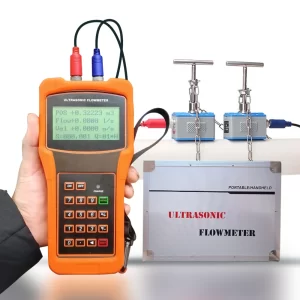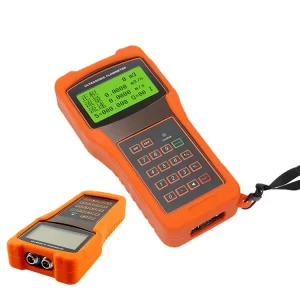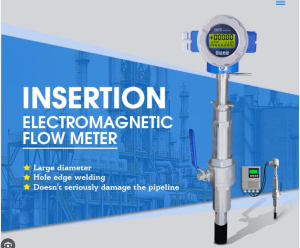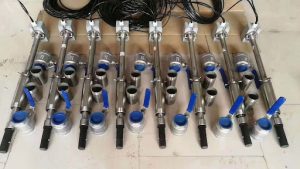When people hear the term handheld ultrasonic flowmeter, they typically think of large-scale industrial facilities or municipal water management systems. And while that’s true, there’s so much more to the story. These compact, non-intrusive devices have quietly made their way into some unexpected industries—and they’re transforming how we think about flow measurement.
In this article, we’ll explore seven surprising industries using handheld ultrasonic flowmeters and why they’ve adopted this technology. Whether it’s about boosting efficiency, ensuring safety, or complying with strict regulations, these sectors have found clever and practical uses for these innovative devices.
Let’s dive in.
What Is a Handheld Ultrasonic Flowmeter?
Before jumping into the list, let’s quickly define what we’re talking about.
A handheld ultrasonic flowmeter is a portable device that uses ultrasonic sound waves to measure the velocity of liquid within a pipe. By calculating the time difference between ultrasonic pulses traveling upstream and downstream, the flowmeter determines flow rate—without needing to cut into the pipe or interrupt service.



These devices are valued for being:
-
Non-invasive
-
Highly accurate
-
Portable and easy to operate
-
Compatible with a wide range of pipe materials and fluids
Now, onto the surprising part—where these tools are making an unexpected impact.
1. Craft Breweries: Precision in Every Pour
Craft breweries may not come to mind when you think of high-tech instruments, but consistency and quality are everything in brewing. Breweries need to monitor flow rates of water, wort, and finished beer throughout the brewing process.
Handheld ultrasonic flowmeters allow brewers to:
-
Ensure accurate batch production
-
Detect leaks in piping systems
-
Monitor water usage for sustainability reporting
Because these meters are non-invasive, there’s no risk of contamination, making them perfect for clean-in-place (CIP) systems too.
2. HVAC Contractors: Diagnosing System Performance
Heating, ventilation, and air conditioning (HVAC) professionals often work on complex systems with chilled and hot water loops. Traditionally, measuring flow in these systems was labor-intensive or required shutting down the system.
Now, with handheld ultrasonic flowmeters, HVAC contractors can:
-
Diagnose flow-related issues on the spot
-
Verify pump performance
-
Balance hydronic systems accurately
These meters help improve energy efficiency and reduce customer complaints by fine-tuning system flow in real-time.
3. Agricultural Irrigation: Water Management with Precision
You might be surprised to learn that modern farming uses sophisticated tech, including ultrasonic flowmeters.
In agriculture, water is one of the most valuable resources. Farmers use handheld flowmeters to:
-
Measure irrigation flow accurately
-
Detect inefficiencies in drip systems
-
Ensure compliance with water usage regulations
Flowmeters help optimize irrigation schedules, which in turn boosts crop yields and reduces water waste.
4. Theme Parks: Keeping the Fun Flowing
Amusement and water parks rely on complex systems to manage water for rides, pools, and fountains. These environments demand constant monitoring to ensure safety, water quality, and mechanical integrity.
Handheld ultrasonic flowmeters come in handy for:
-
Routine inspection and maintenance
-
Monitoring flow to water attractions
-
Detecting blockages or pump failures
Because the systems are often running continuously, being able to measure flow without stopping operations is a huge benefit.
5. Marine and Shipping: Keeping Vessels Efficient
Maritime operations have stringent requirements for fuel efficiency and environmental compliance. Handheld ultrasonic flowmeters are being used in:
-
Cooling water flow monitoring
-
Fuel oil transfer verification
-
Bilge and ballast water flow measurement
Ship engineers use them to maintain optimal engine conditions and track onboard systems, ensuring fuel savings and regulatory compliance without intrusive installations.
6. Mining Operations: Measuring Harsh Fluids Safely
Mining is another unexpected industry where handheld ultrasonic flowmeters shine. Traditional mechanical meters often fail in harsh environments due to abrasive fluids and difficult access.
With ultrasonic technology, operators can:
-
Measure slurry or chemical flow rates safely
-
Avoid pipe damage and shutdowns
-
Access difficult or remote pipework
This leads to better process control, reduced downtime, and safer working conditions—especially in underground or hazardous environments.
7. Pharmaceutical Manufacturing: Sterility and Accuracy
In pharmaceutical production, sterility and precision are non-negotiable. Fluids like purified water, solvents, and liquid drugs must be transferred and measured with extreme care.
Handheld ultrasonic flowmeters offer:
-
Sterile, non-contact flow measurement
-
Validation of CIP processes
-
Documentation for regulatory audits
This helps pharma companies meet FDA and GMP requirements without interrupting critical production lines.
Key Benefits That Make Ultrasonic Flowmeters Ideal
Across all these industries, handheld ultrasonic flowmeters offer a unique combination of advantages:
✅ Non-Invasive and Sterile
No pipe cutting or contamination risk—ideal for sensitive industries like food, pharma, and water treatment.
✅ Cost-Effective and Portable
One device can be used across multiple sites and applications, reducing capital expenditure.
✅ Highly Accurate
Modern devices deliver ±1-2% accuracy, even on challenging pipe materials or complex fluid types.
✅ Time-Saving
Instant results mean faster diagnostics and repairs, especially valuable for technicians and contractors.
How to Choose the Right Handheld Ultrasonic Flowmeter
Not all ultrasonic flowmeters are created equal. When choosing one, consider:
-
Pipe size and material
-
Type of liquid (clean, dirty, chemical, etc.)
-
Desired accuracy level
-
Data logging and connectivity features
-
Battery life and portability
Brands like Flexim, Fuji Electric, Siemens, and Dynasonics offer reliable handheld models with varying features for different industry needs.
Real-World Examples of Impact
Let’s bring it to life with a few real-world scenarios:
-
A craft brewery in Oregon cut its water usage by 30% after identifying leaks with a handheld meter.
-
An HVAC contractor in New York City used it to balance an entire skyscraper’s hydronic system—saving thousands in energy bills.
-
A theme park in Florida spotted an obstruction in a major water ride pipeline without needing to disassemble the system.
These examples show the immediate ROI that handheld flowmeters can bring.
The Future of Flow Measurement Is Portable
The industries we’ve covered are just the beginning. As technology improves, expect handheld ultrasonic flowmeters to become even more accurate, user-friendly, and connected (think Bluetooth, cloud integration, and AI diagnostics).
Their growing role in predictive maintenance, energy conservation, and regulatory compliance means they’re no longer optional—they’re essential tools for modern operations.
Conclusion: Small Device, Big Impact
What ties all these diverse industries together is the need for accurate, fast, and non-invasive flow measurement. Whether it’s beer, water, fuel, or chemicals, handheld ultrasonic flowmeters provide a smart and reliable solution—often in places you’d least expect.
If you’re in one of these industries and not yet using this technology, it’s time to consider how much value you’re leaving on the table. These devices may be small, but their impact is anything but.
Handheld ultrasonic flowmeters are revolutionizing fluid management across sectors—and chances are, they’ll play a role in your industry’s future too.





